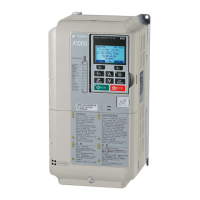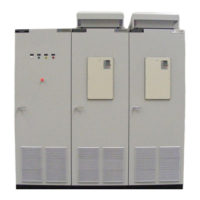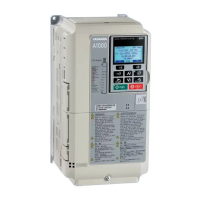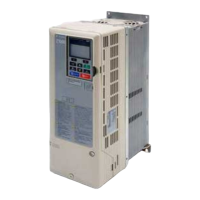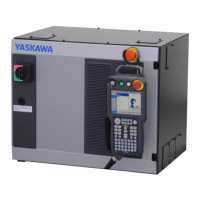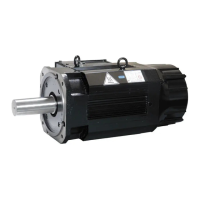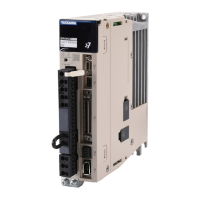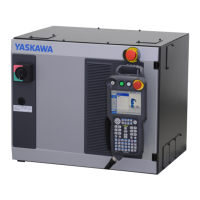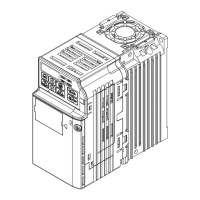5.8 L: Protection Functions
250 YASKAWA ELECTRIC SIEP C710616 27C YASKAWA AC Drive A1000 Technical Manual
Single Drive KEB Ride-Thru 1 (L2-29 = 0)
Once KEB Ride-Thru begins, the drive uses regenerative energy from the motor to keep the DC bus voltage at the level
set to L2-11 while adjusting the rate of deceleration based on the time set to L2-06.
Note: If undervoltage occurs in the DC bus (Uv1), shorten the KEB deceleration time (L2-06). If overvoltage occurs (oV), increase the
KEB deceleration time.
Single Drive KEB Ride-Thru 2 (L2-29 = 1)
The drive uses information about the inertia of the connected machinery to determine the deceleration rate necessary to
keep the DC bus voltage at the level set in parameter L2-11. The resulting deceleration time is calculated based on the
system inertia and cannot be adjusted.
System KEB Ride-Thru 1 (L2-29 = 2)
Drive decelerates at the KEB deceleration time set to L2-06. L2-06 is the time required decelerate from the current
frequency reference to 0. Using this setting, multiple drives can decelerate while still keeping the speed ratio between
those drives constant. The voltage level in the DC bus is disregarded when using this function. Braking resistor option
required.
System KEB Ride-Thru 2 (L2-29 = 3)
Drive decelerates based on the KEB deceleration time set to L2-06 while monitoring the DC bus voltage. If the voltage
level rises, the drive briefly holds the frequency before continuing to decelerate again.
■
KEB Ride-Thru Start
KEB operation is always triggered in the same way, independent of the selected KEB operation mode. When the KEB
function is selected as the function to be executed when power loss operation occurs (L2-01 = 3, 4, or 5), then KEB Ride-
Thru will be activated if one of the following conditions becomes true:
• A digital input programmed for H1- = 65 or 66 is activated. This will start KEB operation using the mode selected
in parameter L2-29.
• A digital input programmed for H1- = 7A or 7B is activated. This will automatically select Single KEB Ride-Thru
2, disregarding the setting of L2-29.
• The DC bus voltage fell below the level specified in L2-05. The KEB operation will start as specified in L2-29.
Note: KEB Ride-Thru 1 and 2 cannot both be assigned to input terminals at the same time. Attempting this will trigger an oPE3 error.
If a digital input is used for triggering the KEB operation and the device that controls the input acts relatively slow,
parameter L2-10 can be used to set a minimum KEB operation time. In the example below, KEB operation is triggered
by the DC bus voltage and the Hold command is triggered by a digital input.
Figure 5. 90
Figure 5.90 KEB Operation Using a KEB Input
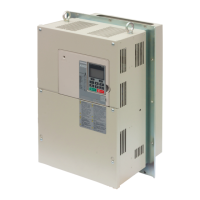
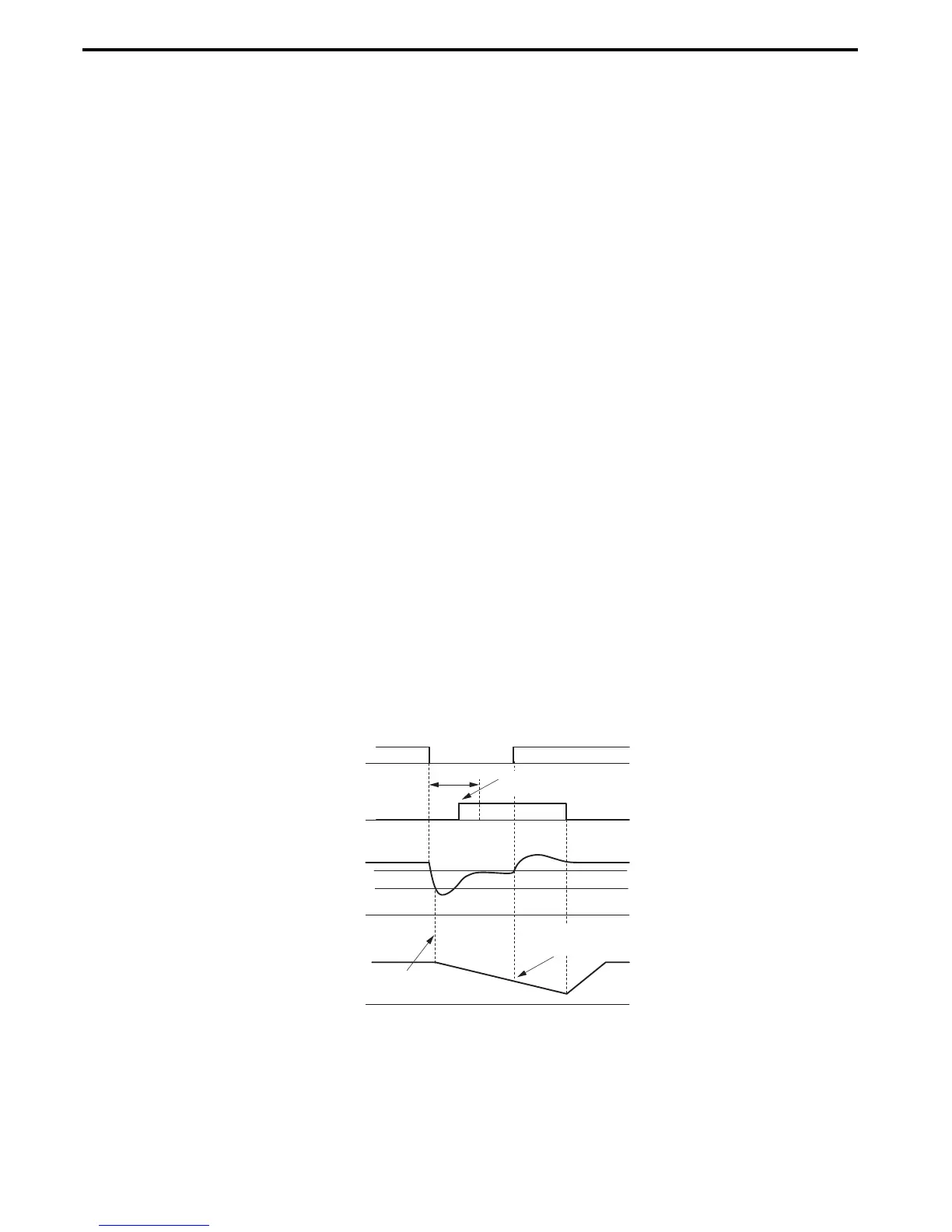